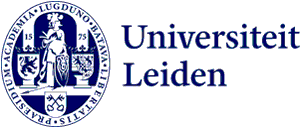
How do we get the we-feeling on the faculty? This is how Joost Batenburg thinks
As professor of computer science at LIACS and programme director of incentive programme SAILS, Joost Batenburg knows better than anyone what is going on in the faculty. Over the past three years, he learned at lightning speed what is going well and where sensitivities lie. 'We need to move more towards the we-feeling.'
Since his appointment in 2020, Batenburg discovered what the DNA of the Leiden researcher consists of: driven from content, and with a high degree of self-governance. The Leiden researcher wants to set the direction bottom-up. In the core group, he represents that voice, hoping to foster fruitful cooperation between the faculty board and the institutes. 'As a diplomat, I try to balance steering from above,' he says.
'We are the faculty'
In the core group, Batenburg therefore pays attention to sensitivities. What he notices is confusion of concepts when talking about the faculty. 'In some cases, this means the faculty board, or rather the institutes. But the faculty consists of more than that. We are the faculty all together. So it is important that it is widely supported. That is a difficult process, but this period is a great opportunity to take steps in that direction.'
What role do we have within this ecosystem?
We can create that we-feeling by working together more. Something that is already happening between different institutes, says Batenburg. And that is yielding success. 'Look, for example, at the combination of AI and drug development. There, we celebrate successes not only with content, but also in terms of funding. This is due to the fine cooperation. We need to build on those successes.' In addition, there are still plenty of opportunities we can seize. For instance, Batenburg says the distance between the institutes and the faculty is quite large. 'It would be good if we knew better what is going on and what role we have within this ecosystem.'
By working together, we can build bridges within the faculty
He also sees AI as something very relevant to all institutes. 'We all have to deal with it. It offers pre-eminent opportunities to collaborate.' Batenburg cites examples such as coordinating software development and teaching on machine learning. 'But also by investing in people who are strong in both content and AI. This allows us to build bridges within the faculty.'
An inspiring environment that invites cooperation in education and research
The first steps have already been taken during three strategy sessions in Corpus, which Batenburg says were indispensable. 'Because if you don't start the conversation, you don't know what is going on among people. Being heard is essential for everyone.' During the sessions, he got confirmation of the impression he already had. Namely that in Leiden we are very much fans of bottom-up-driven education with the faculty in a facilitating role. 'We could immediately think broadly about how that should be fleshed out.'
A warm faculty that recognises and facilitates talent
In the core group, Batenburg's focus is more on research than teaching. He believes it is important for the faculty to be an inspiring and pleasant environment that invites collaboration in education and research. 'A warm faculty that recognises and facilitates talent. And with room for own initiative.'
